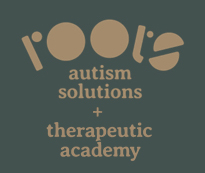Understanding the IEP – Present Levels of Academic Achievement and Functional Performance
Otherwise known to some as the meat of the IEP, the PLAAFP is section of the IEP that should make every component make sense. The purpose of this section of the document is to identify the areas for which special education services are necessary, and to what extent supports are needed. When reading the IEP, this section to tell the reader why each goal is necessary. It should also assist the team in identification of specific accommodations and modifications that are critical for learning and progress.
More specifically, “PLAA” refers to the “Present Levels of Academic Achievement”. In other words, the individual developing the PLAAFP should be explaining where your child is in terms of academic achievement currently. It is a snapshot of the academic specific strengths and weaknesses, in measurable terms, which means that there must be data points specific to the academics discussed. For example, the educator should not simply say “Johnny is good at addition”. Rather the teacher should provide data specific information, such as “In assessments on 9/1, 9,15, and 10/1 of the 2017-2018 school year, Johnny was able to complete 10 out 10 single digit addition problems correctly utilizing the manipulatives in the form of counters as needed within a three minute quick assessment”.
The “FP” in “PLAAFP” signifies your child’s “Functional Performance”. The educator should be providing data related to the “how” your child learns. What are the tools and resources that your child needs to be successful? This should be coupled with the data to support such statements. The items you should be looking for may be related to time on task, barriers in the classroom that can be addressed with accommodations and modifications, or other items related to day to day functioning that impact or support your child’s academic development.
The PLAAFP should also address how your child’s disability impacts his or her involvement or progress as compared to his or her same aged peers in the general education setting. This section should never state that your child cannot be involved in general education because due to his or her disability. The educator should provide details and data to support the barriers your child faces in progressing at the rate of his or her same aged peers.
Roots Autism Solutions is committed to supporting every family through the IEP process! Don’t forget to let us know the date for your child’s IEP meeting!






